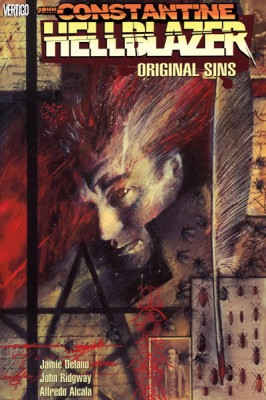Reviewer: Emera
Date read: 7.14.2016
Book from: Personal collection
The Lies of Locke Lamora features long cons, crime-boss uprisings, and bloody revenge plots amid the cluttered criminal underworld of a bustling, sweltering, alchemy-infused alternative medieval Venice. Our heroes: the Gentleman Bastards, a tiny brotherhood of con artists, led by the unparalleled liar Locke Lamora.
One of my good reading buddies went crazy for this novel shortly after it came out, and I had always wanted to read it since, especially because the title was so mischievous, lyrical, and evocative. The fact that it continually resurfaces as a fan favorite 10 years on also piqued my interest. (e.g., it’s still on the bestseller list at my local sff bookstore, Pandemonium.)
Based on the hoopla, I’d been expecting something Dorothy Sayers-esque – exceptionally witty and elegant – but unfortunately found this, prose-wise, to be a solid B+ at best. Lynch’s writing is markedly juvenile: he overuses italics and parentheticals, and treats profanity in large quantities as funny per se. Characters emote by gritting their teeth, gulping, and squeaking. I would describe the humor as geekily goofy, rather than witty. His descriptions are colorful and involving, but not sharply observed. He does a good job of conveying personality more through dialogue than exposition, but again, isn’t quite sharp enough to fully resolve characters purely through these means. I wouldn’t say the characters feel hollow, as they often do in mediocre fantasy – symbols of people rather than people – but there’s a general feeling of a slightly unfocused photograph about the whole thing. The villains in particular are dreadfully boilerplate.
That said, I stuck it out, and had a lot of fun with it. This book has vim – it has bounce and fun and grit and texture – qualities that are helped along by Lynch’s obvious enjoyment at sharing his created city, and a greater part of lightheartedness than grimness. Continue reading The Lies of Locke Lamora, by Scott Lynch (2006) E
